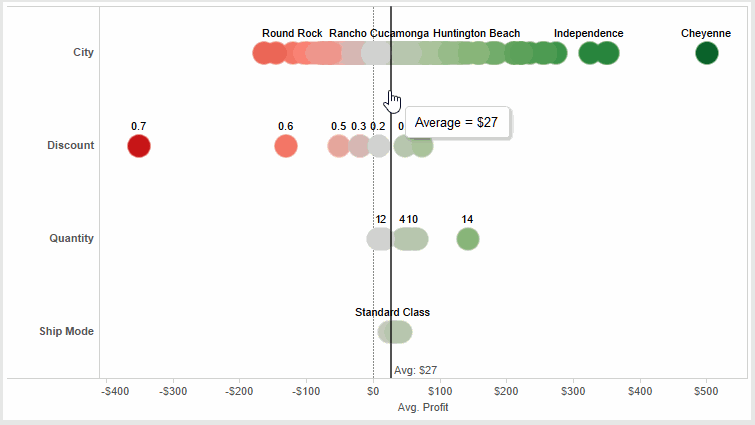

Preferred stock refers to a class of ownership that has a higher claim on assets and earnings than common stock has. Stakeholder capitalism is a system in which corporations are oriented to serve the interests of all their stakeholders. A shareholder is any person, company, or institution that owns at least one share in a company. A shareholder can sell their stock and buy different stock; they do not have a long-term need for the company. Stakeholders, however, are bound to the company for a longer term and for reasons of greater need. A sole proprietorship is an unincorporated business with a single owner who pays personal income tax on profits earned from the business.

For example, shareholders can be stakeholders of your project if the outcome will impact stock prices. A stakeholder is anyone who has direct or indirect interest in the company. If a person is affected by the performance of a company, he is a stakeholder. For a company, stakeholders could be employees, their families, suppliers of raw materials, buyers of finished products, end customers, and by large entire community. There are examples of organizations where there are no shareholders but only stakeholders such as a University. Shareholders can be defined as an individual, group, or company that is levied with the ownership status of an organization for purchasing the shares of the same.
On the other hand, stakeholders are required in each company irrespective of its size and other factors. Shareholders are regarded as the owners of the company, whereas stakeholders are the parties that are directly or indirectly have an interest in the operations of a company. Shareholders are more concerned about increasing owners’ wealth, whereas stakeholders focus on enhancing the goodwill of the company. A company selling shoes that only uses recycled, sustainable material would benefit from the stakeholder model.
As a result, employees lose their jobs and must look for new ones to make a living. There are some organizations that don’t have shareholders, such as a public university, which has many stakeholders. These include students, families, professors, administrators, employers, state taxpayers, the local and state communities, custodians, suppliers and more. A stakeholder is a party with an interest in an enterprise; stakeholders in a corporation include investors, employees, customers, and suppliers. A shareholder can be an individual, company, or institution that owns at least one share of a company and therefore has a financial interest in its profitability.
They should now be far more concerned with other third parties that could depend upon the corporation in any way, instead of merely profits. They may include employees, customers, suppliers, and local communities, among others. Stakeholders can influence a company’s decisions by advocating for socially responsible practices, such as fair labor practices, ethical sourcing, and environmental sustainability. The shareholders want the company to undertake activities that ensure having a positive effect on the stock price. Increase dividends or actions that improve the company’s financial condition in the immediate future. Shareholder value is the increase in the value of a company’s shares over time.
Musgrave (ASX:MGV) shares welcome release of first 3D Interactive Model of Cue Gold Project
Suppliers, distributors, or community members are types of external stakeholders. A shareholder is any party—whether an individual, a company, or an institution—that has shares in a publicly owned company. Stakeholder is a broader category that refers to all parties with an interest in a company’s success. Thus, shareholders are always stakeholders, but stakeholders are not always shareholders. Stakeholders may be directly or indirectly affected by what happens in the company.
Although shareholders are owners of the company, they are not liable for the company’s debts or other arising financial obligations. The company’s creditors cannot hold the shareholders liable for any debts that it owes them. However, in privately-held companies, sole proprietorships, and partnerships, the creditors have a right to demand payments and auction the properties of the owners of these entities. A project management tool can help simplify the stakeholder management process. For example, Asana lets you create and assign tasks with clear due dates, comment directly on tasks, organize work into shareable projects, and send out automated status updates. That way, you can give stakeholders the information they need, when they need it.

Board MembersBoard members comprise the individuals whom the shareholders elect as their representatives. They are responsible for taking crucial corporate decisions regarding the company’s policies, dividend payouts, top-level managers’ recruitment or layoff and executive compensation. We’ve written about what a stakeholder is before, and the definition still stands. A stakeholder can be either an individual, a group or an organization impacted by the outcome of a project. The party having a stake in the company or organization is known as Stakeholder. Depending on the type of stock you own, you’re either a common shareholder or a preferred shareholder.
Shareholder’s Wealth Maximization Vs. Stakeholder Welfare
Examples of stakeholders include employees, customers, suppliers, communities, and shareholders. Shareholders are common people who become part owners of the company by buying equity stock either from the company, i.e., through an initial public offering , or from the secondary market. The shareholders make profits in terms of dividends and capital appreciation if the companies make profits and the price of their share of the index increases.
Therefore, CSR encourages corporations to make choices that protect social welfare, often using methods that reach far beyond legal and regulatory requirements. Shareholders are always stakeholders in a corporation, but stakeholders are not always shareholders. A shareholder owns part of a public company through shares of stock, while a stakeholder has an interest in the performance of a company for reasons other than stock performance or appreciation. (They have a «stake» in its success or failure.) As a result, the stakeholder has a greater need for the company to succeed over the longer term.
- While both have their objectives, they are critical to a company’s growth and development.
- Shareholders own shares in a company while stakeholders have only a vested interest in the company.
- Stakeholders are more concerned with the longevity of their relationship with the organization and a better quality of service.
- As a business owner or investor, it is essential to understand the differences between these two groups and the impact they can have on your business.
External –Those not part of the company but have some role in its functioning, such as customers, suppliers, creditors, labor unions, community groups, governments, etc. Internal –Those directly linked with the company or project, like employees, investors, shareholders, managers, etc. Share the dashboard with your stakeholders and shareholders to keep them informed on what matters.Mostly, stakeholders and shareholders alike are more interested in the big picture. However, during a presentation, you might get some questions thrown at you that will demand a deeper look.
Shareholders are just the legal owners of the company, who have got the ownership by purchasing the shares of the company. Stakeholders is a little bigger term than Shareholders, which includes all those factors which have an affect on the business. Not only business doing entity have stakeholders, but every organization irrespective of its size, nature, and structure are accountable to Stakeholders.
Company
This stakeholder mindset is, in turn, likely to create long-term value for both shareholders and stakeholders. For example, a shareholder might be an individual investor who is hoping the stock price will increase because it is part of their retirement portfolio. Shareholders have the right to exercise a vote and to affect the management of a company.
Shareholder value is important to shareholders because it represents their investment in the company. It is also important to the company itself because it shows how well the company is doing financially. Shareholder value can be used to compare different companies or to measure the performance of a single company over time. The second is that businesses should be managed for the long-term benefit of all stakeholders, not just shareholders. Common shareholders have voting rights and may receive dividends, but they have no guarantee of receiving their investment back if the company goes bankrupt.
Are Employees Shareholders or Stakeholders?
The company is always in a dilemma as to whom to give higher priority, viz., shareholder’s wealth maximization vs stakeholder welfare as a corporate objective. The shareholders being the key controllers, may want the company to focus on improving its financial performance. On the other hand, stakeholders want to incur expenditure that increases their value but does not necessarily add to profitability, especially in the short term. With changing economic dynamics, companies have now started treating increasing stakeholder value as a part of corporate social responsibilities. Therefore, stakeholders can be internal, such as employees, shareholders and managers—but stakeholders can also be external. Basically, stakeholders are those who will be impacted by the project when in progress and those who will be impacted by the project when completed.
The thought process behind the shareholder model is for a board to center its approach around maximizing profits accruing to its shareholders. Officers and directors involved in a company following this model must primarily contemplate the various interests of every possible stakeholder throughout its governance process. There are two distinct, conflicting models involved in corporate governance. The growth and development of a business have a number of requirements and not only the money. Shareholders only provide money, and the rest is provided by the other stakeholders of the business.
Shareholders are primarily concerned with making profit while stakeholders are also concerned with how the company affects their lives. Shareholders own shares in a company while stakeholders have only a vested interest in the company. Many stakeholders care difference between shareholders and stakeholders deeply about an organization’s perceived social impact — they want the business to play a positive role in the world. If a stakeholder holds any form of shareholder interest in the company, stakeholders will want dividend payouts to be worth their while.
On the other hand, Stakeholders focuses on the performance, profitability, and liquidity of the company. On the other hand, stakeholders are focused on much more than just finances. Internal stakeholders want their projects to succeed so the company can do well overall—plus they want to be treated well and advance in their roles. That can mean different things, like receiving a great product, experiencing solid customer service, or participating in a respectful and mutually beneficial partnership.